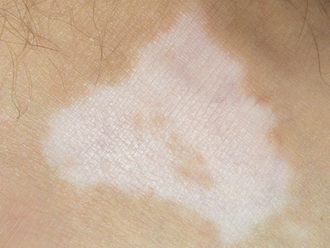The map has been read, and the destination reached. In the concluding part on the various treatments available for facial age control, Aryeman Raj rounds up the rest of the options
Recently, time seems to have made your face its running ground. It won't stop. It won't even take a break. And it will, absolutely not, take a step back. In fact, it looks like it is holding out a vague threat - like running faster if need be!
Desperate to placate the threat, you lavish your face with rich creams and silken lotions, pamper it with nightly nutrient-rich masks, please its every demand, keep the sun off your face ... and yet, that vague threat keeps staring at you in the mirror.
Maybe you need to raise the bar and look for stronger ways of coaxing time to stand still? Or even step back a bit?
Dr Buthainah Al-Shunnar
Specialist Plastic Surgeon, Al Shunnar Plastic Surgery, Dubai
How does the ageing process affect the face?
Our face can be divided into 3 areas: upper face, mid-face, and lower face. And then there is the neck area. In case of the upper face, ageing involves eyebrow descent and redundancy of the upper eyelids. This could be due to excess skin on the upper lid or due to the lowering of one's eyebrow.
In case of mid-face descent, the cheeks begin to travel south. If you notice, children have their cheeks very close to their eyes and as one ages, the space between the lower lids and the cheeks increases.
In terms of the lower face and neck, the appearance and deepening of the folds around the mouth (called nasolabial folds) and appearance of jowls and neck redundancy age this area.
Dr Al-Shunnar elaborates on various surgical procedures that constitute age-control treatment:
Eyelid Surgery
What causes bags under the eyes?
This is part of the human physiology. During the ageing process, midface descent, together with loss of elasticity of the septum (which is the tissue that holds the fat pads firm in the lower eyelid), results in these bags becoming noticeable.
What can surgery do?
We remove part of the fat pads and the rest are repositioned. This ensures that you do not have a skeleton-like look. Upper and lower eyelid procedures (also known as blepharoplasty) help in tightening the eyelids, reducing puffiness and diminishing the wrinkles on the eyelids.
Any visible scars after the treatment?
Not really. Scars are bleak and they don't show. Upperlid scars are hidden in the crease, lower lid (scars) in the lash line, and hence don't show.
Any pre-surgery guidelines?
Patients opting for upper eyelid surgery and facelifts should avoid taking Aspirin for at least 21 days prior to the surgery. Medical science has proven that one Aspirin can cause thinning of the blood for 21 days. Smoking is also a big no-no because it can affect the healing process, especially in a facelift.
How long does eyelid surgery take?
Most eyelid surgery treatments are a single day's procedure. The patient can go home the same day. While the upper eyelid surgery lasts from 20 minutes to 40 minutes, the operation for the lower eyelid tends to last longer. Altogether, it takes about an hour to perform both.
Does this surgery cause any bruising?
Eyelids tend to bruise. It takes about 10 days for the bruising and swelling to subside completely. Patients are advised to use ice-packs, sleep with their head elevated and ensure that their eyes are completed shut. While stepping out in the sun they need to protect themselves.
Browlift
How does a browlift treatment help?
It involves repositioning the brows to a higher level in cases where there is significant brow descent. This improves the brow position, upper eyelids and the frown lines as well.
Can non-invasive treatments like Botox and lasers help in raising one's brow?
Lasers cannot elevate the brow position. Botox is an excellent temporary measure but it has limited capabilities for patients with severe brow descent. For early ageing, Botox is great, but when the brows are significantly low, you may need a browlift surgery to correct the problem.
Are the incisions deep?
Recently, it has been done using an endoscope. The endoscope is a camera where the incisions are kept to a minimum and within the hairline.
Threadlift
Could you describe a threadlift treatment?
In the threadlift method, two of the most popular brandnames of threads currently in use are Contour and Aptos.
The methodology of a threadlift involves marking the area close behind the ear or within the hairline depending on the number of threads to be used, which again depends on the area/s of the face that needs to be addressed - from just a browlift to a full facelift.
Tiny incision/s are made along the marked spots. The Contour brand of thread, for example, has tiny barb-like cogs along its length which grasp on to and lift the soft tissues.
The exact placement of thread varies from patient to patient. Once the desired degree of lift is achieved, the thread is pulled up, cut and knotted, allowing it to retract deep under the skin where it cannot be felt or seen.
The threadlift method can be used to lift the mid-face region, the brows or to tighten a sagging neck. However, it does not last as long as a conventional facelift and the degree of lift is not as obivious. The results are very subtle.
What are the threads made of? How different is it from a mini facelift?
The threads are made from prolene, a non-absorbable polymer. Each brand has its unique way of securing and suspending the tissue. Contour thread design has 'barbs' or 'cogs' which are spaced out evenly along the thread.
They glide in easily into the skin and when you lift them up, the 'cogs' catch the skin and pull it up. They can be used anywhere on the face. On an average, 14 threads are used on the face - seven on each side - to achieve the desired result.
Are the results as effective as a mini facelift? What is the down time?
This treatment gives you a look that says you've had a very good night's sleep. Although the down time is very low, it is an expensive treatment which could last for around three years.
Is there any scarring on the skin?
Due to the unique design of the threads, the surrounding tissues act to hold the threads in place without leaving behind any visible scars.
Are patients advised of post-lift precautions? What are the side effects, or risks, if any? What are the chances of the thread poking out of the skin or getting dislodged in the tissues?
The clients are briefed in detail about the precautions that need to be taken after the session. For instance, they should not press or scrub their face; they should sleep on their back with the head elevated; and they should not talk excessively.
These precautions generally need to be taken for a fortnight. The side effects could be slight bruising, discolouration and puffiness which last for a few days.
The risks are minimal. There is a rare chance of the thread poking out of the skin as the ends are cut very close to the knot; or an allergy; or the thread getting dislodged. In any of the cases, the client is advised to contact the doctor immediately for an in-office consultation.
Dr Seema Satyapal Singh
Dermatologist, Kaya Skin Clinic
"Today, beauty conscious individuals are well abreast with the scientific advancement in non-surgical cosmetic services. They are going in for a more more subtle and gradual change in their appearance, especially related to age- control treatments.
"Going 'under the knife' is history. Non-invasive procedures like Botox, peels, microdermabrasion and skin tightening are more attractive than traditional surgical facelifts because the down time is less and it looks more natural. They are less extreme and, due to faster recovery times, make them an attractive option," Dr Singh observes.
Here she talks of the relatively easier ways of loooking young.
Peeling
In an era where natural ingredients are in vogue, why should one opt for peels which are chemical based?
At Kaya Skin Clinic, we use glycolic peels. These are the mildest peels which have alpha hydroxy acids (AHAs). These natural fruit acids rejuvenate the skin by shredding old, sun-damaged surface skin cells.
Explain.
AHA acids dissolve the cement-like substance that holds the surface skin cells together, thereby peeling/ exfoliating the dead skin cells.
The exfoliation process acts as a stimulus for the lower layer of the skin to multiply faster and results in a fresher, smoother and brighter skin. The process lightens the blemishes, reduces the visible fine lines and improves the texture of the skin, giving it a definite glow. If you have an oily or acne prone skin, it helps in normalising it.
What does the treatment involve?
Prior to the treatment, a detailed diagnosis of the client's skin type and severity of the problem is done with the help of a skinscope (a machine which helps detect areas of oily skin, etc.), analysis and then an appropriate treatment or a combination of it is suggested.
During the session, the face and neck area is cleansed. Then the peel is applied onto the required area. The client will experience a slightly tingling sensation, similar to applying a face bleach.
During the entire session, the doctor checks whether the client is able to tolerate the sensation and how the skin is responding during the peel session. If there are any concerns, then the session is terminated. This is rare.
Is one peeling session enough?
After a peeling session, patients do notice a brighter and lighter-looking skin. However, one session is not enough. The number of sessions needed depend on skin concerns, ranging from an anti-ageing programme or an acne/pigmentation reduction.
How do salicylic peels differ from glycolic peels?
If glycolic peels contain AHAs, salicylic peels contain beta hydroxy acids. These peels are used mainly for oily skin and acne prone (inflammatory) skin. The benefit of salicylic peels is that they are fat soluble and help in dissolving/ breaking down the oil/sebum.
Glycolic peels are used for all skin types - normal, dry, oily, acne-prone skin or skin with pigmentation concerns. Salicylic peels are mainly used for oily, or/and acne prone skin.
What is the down time of this treatment?
This depends on the type of peel being used. Mild peels are superficial peels which remove the dead cells. There is no down time involved here.
If medium or deep peels are used, the client may notice little crusting and peeling of the skin after the session, which needs him to be away from his regular job for a week or two.
The clients are suitably advised about all the precautions and developments that they will experience during the treatment.












